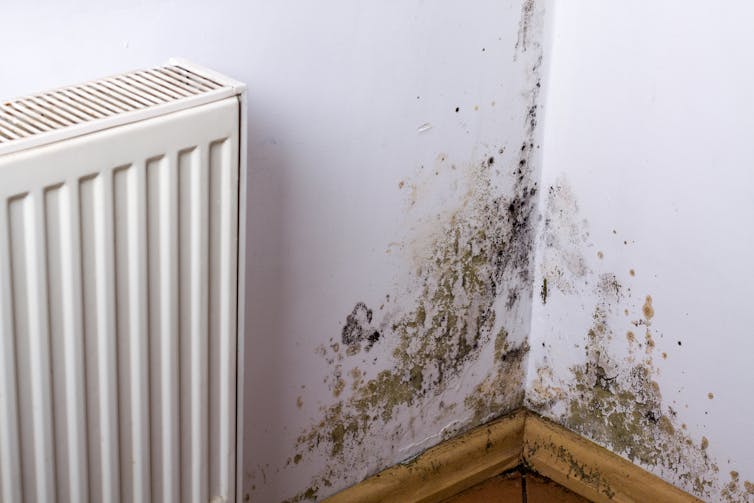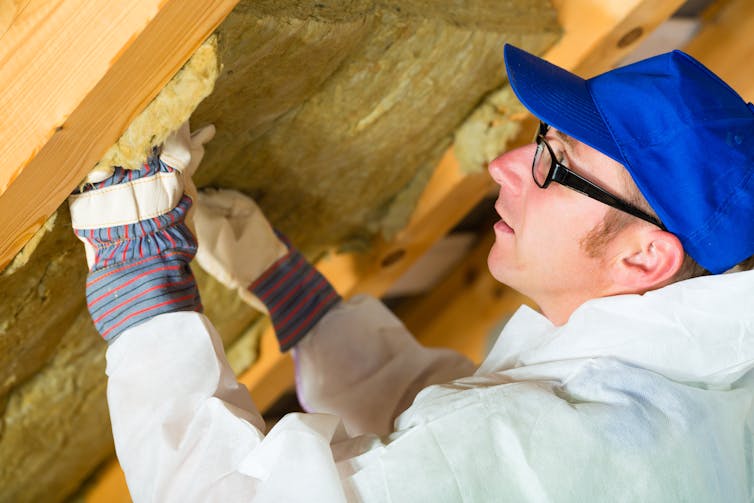Fuel poverty makes you sick – so why has nothing changed since I was a child living in a cold home?
After decades of research revealing the long-term damage of fuel poverty, the problem is worse than ever.
March 14, 2023 • 7 min • Source
During the 1970s and 1980s I grew up in a cold home. On very cold mornings, ice would be crusted on my bedroom window and my every breath would condense in the air.
Things had to be done in a rush to avoid the cold. I remember not wanting to get out of bed, then once I was up, rushing to get dressed in clothes that felt damp before hurrying downstairs to warm them in front of the fan heater. We only ventured from the one warm room in the house each evening if necessary, usually to dash to the toilet or quickly make a cup of tea. Bedrooms were no-go areas until you had to go to sleep – a nightly ritual which involved putting a hot water bottle under the covers half an hour before bedtime then layering up in night clothes, socks and blankets, only to wake up in a cold room once more.
I have been researching cold homes for almost 30 years. The war in Ukraine, rising energy prices and inflation have driven millions more households into fuel poverty. But the fact that this problem has endured over four decades has a lot to do with the poor condition of housing in the UK. Much of it is badly insulated, draughty or hard to ventilate and heat.
Since I started my career, the variety of health consequences of living in cold homes has become widely recognised and well documented. Yet the problem is worse now than when I was a child.
Cold homes are sickly homes
For instance, we now know that being unable to afford sufficient heating increases your risk of developing heart disease and respiratory problems. Your mental health suffers too: anxiety, stress and depression are more common among residents of inadequately heated homes. Cold homes also exacerbate conditions such as arthritis and make you more likely to catch colds, flu and pneumonia . Living in a cold home was even found to make people less dexterous, increasing the likelihood of accidents and unintentional injury .
Research has revealed that those at greatest risk of health problems include older people , babies and children , and people with a longstanding illness or disability.
We know that these groups are often more susceptible to the cold and are particularly vulnerable as they tend to spend more time at home. A child living in inadequate housing is at a greater risk of chest and breathing issues, including asthma and bronchitis . Young people in cold homes are unhappier than those living in warmer housing, and children living in cold, damp homes miss more school days due to illness and find it harder to study at home.

The comparatively high number of excess winter deaths in the UK compared to other European countries with colder winters has been linked to the country’s poorly insulated housing combined with high levels of fuel poverty. The energy efficiency of a house largely determines how vulnerable the occupants will be to cold-related health risks.
An inability to meet basic energy needs, such as heating or having a warm bath, is one of the main contributors to chronic stress in low-income households. Fuel poverty accompanies and exacerbates existing inequalities . As well as enduring inadequate housing, those living in fuel poverty are much more likely to experience other forms of deprivation, all of which contribute to a cumulative burden on their health. For example, at present disabled people face spiralling energy poverty due to a combination of their disability, ill health and reduced earning capacity. Being a single parent, experiencing a mental health problem and being out of work are all factors which can push people into fuel poverty.
The benefits of improving homes
Higher energy prices and the cost of living crisis mean many more people will experience fuel poverty and endure the health consequences. Yet there is abundant evidence demonstrating that tackling cold, inefficient and poorly insulated properties and providing suitable ventilation can benefit asthma and respiratory symptoms, mental wellbeing and health more generally . Improving the energy efficiency of homes has multiple benefits for society: by reducing energy use, it can cut carbon emissions and improve the finances of people living in them.

The most vulnerable people are likely to enjoy the biggest health improvements from warmer homes. People with chronic respiratory disease have seen their symptoms improve as a result of lower humidity and increased warmth in winter, which also boosts heart health . Making housing more energy efficient and affordable to heat can also improve personal relationships , increase feelings of autonomy and reduce distress .
Not only would this improve millions of lives, but recent studies have also shown that large-scale home insulation schemes and programmes to upgrade homes to a decent standard reduce hospital admissions , alleviating pressure on health services.
And so I ask, given all this evidence, why hasn’t anything changed since I was a child living in a cold home?

Don’t have time to read about climate change as much as you’d like?
Get a weekly roundup in your inbox instead.
Every Wednesday, The Conversation’s environment editor writes Imagine, a short email that goes a little deeper into just one climate issue.
Join the 10,000+ readers who’ve subscribed so far.
Jan Gilbertson undertakes research on cold homes which examines the impact of home improvements on health. These projects have received funding from government, local authorities, third sector organisations and the ESRC.


